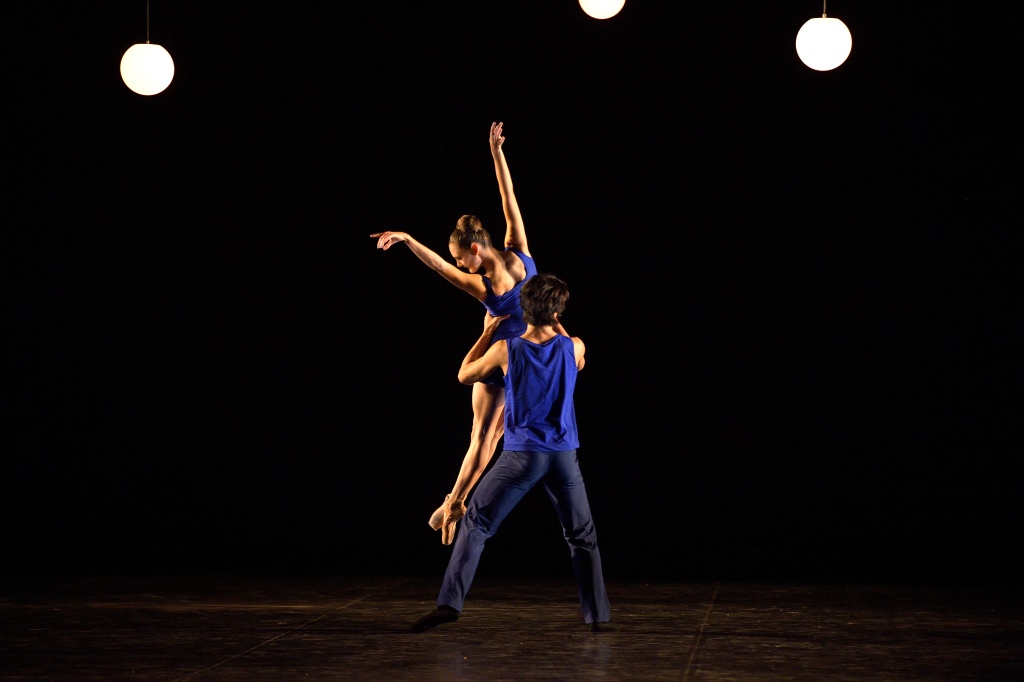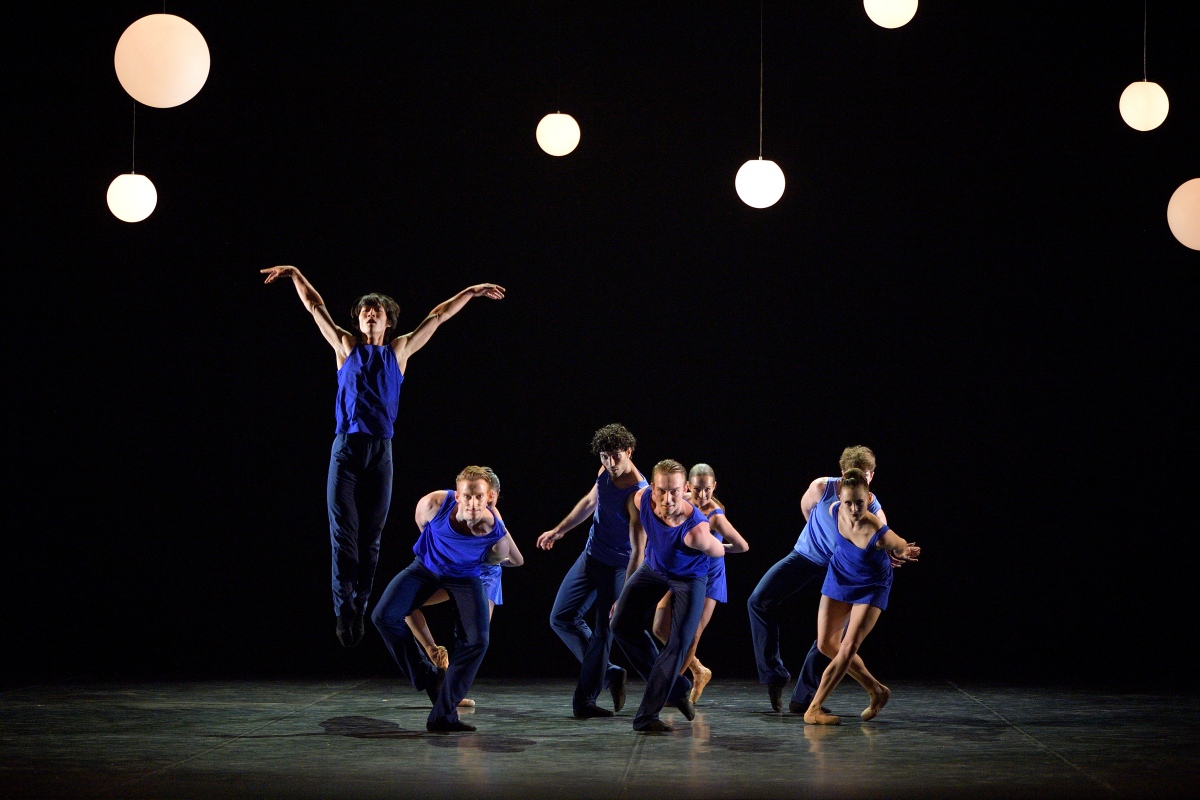The day has come at last! Monday 17 May 2021, and theatres are reopening, so we are off to Sadler’s Wells to watch English National Ballet’s Reunion—the live performances of the five films created last autumn: Take Five Blues, Senseless Kindness, Laid in Earth, Echoes, and Jolly Folly.
And it’s Tamara Rojo’s birthday. What could be more serendipitous?
The day has come at last, and we are excited, but also a bit apprehensive, as if we’re emerging from a bunker where we’ve been sheltering, and we’re not sure of the damage that might await us.
Twitter is awash with tweets about preparing to go to the theatre, concerns about donning “real” clothes (conveyed with great humour) and good wishes from all and sundry to theatres and museums that are reopening.
We have received a long and detailed missive from Sadler’s Wells Theatre about staying safe before, during and after the performance. It makes us feel a tad nervous, but overriding the nervousness is the curiosity about how it will feel to put on glad rags, get on a train and then meet together with hundreds of people in the same building; but hundreds fewer than usual. How will people look? What masks will they be wearing? (We have purchased brand-new silk masks for the occasion.) How will they negotiate the space? How even will the theatre smell?
Overriding the curiosity is the sense of building anticipation, reminding us of how slow the hours would pass as a teenager waiting to see one of our first ballets, The Sleeping Beauty or The Nutcracker, or great stars like Margot Fonteyn, Rudolf Nureyev, Gelsey Kirkland or Mikhail Baryshnikov. Five works, all new to the stage, all to be performed in a single evening after over a year of absence from the theatre. What better way to return to live performance?
As we approach the theatre walking along Arlington Way, the area seems eerily still. But as soon as we turn the corner into Rosebery Avenue we are part of a milling crowd—not as big as usual, but enough to give us a familiar feel of the theatre.
Checking in is easy, and the staff are, as always, relaxed and friendly.
Everything seems just as usual—we’re so accustomed to people wearing masks by now that it doesn’t seem out of place, even in the theatre. Once in the auditorium, there are little jokes about social distancing with the people sitting near us. The Second Circle seems quite full, but with much more evenly spaced empty seats than those unfortunate occasions when not all the seats have been sold.
Everything seems just as usual … until the lights go down and Artistic Director of Sadler’s Wells Alastair Spalding arrives on the stage with Patrick Harrison, Executive Director of English National Ballet. They greet us with emotion in their voices, whereupon the theatre erupts with joyous cheers, whoops, clapping and stamping, to which we enthusiastically contribute.
The buoyancy of the atmosphere continues to simmer throughout the evening, bubbling up to moments of explosive jubilation. We’re lucky to be sitting near Shevelle Dynott, until recently a dancer with the Company, rooting for his friends with unrepressed enthusiasm.
As we knew from the films, each piece creates a different world. In order for us to transition from one to the other without an interval or even a break, short clips are shown of the choreographers and dancers speaking about the works, some of which we remember from the mini documentaries that accompanied the films. These introductions facilitate the shift from one created world to the next, like the wardrobe opening into Narnia …
The worlds are the same as we remember from the films, and yet they are different. Sometimes the dramatic use of space throws relationships into more vivid relief, as in Yuri Possokhov’s Senseless Kindness, even if moments of intimacy and quietness resonate with poignancy as much from our memories as from what we are seeing in front of us on the stage.

The stage space throbs with dramatic energy in Sidi Larbi Cherakoui’s Laid in Earth where the film’s forest and lake are replaced by a kind of wasteland, and the use of physical three-dimensional space evokes the characters’ shadowy reflections in the lake’s murky waters.


Stina’s Quagebeur’s work strikes as the most familiar, but we can see some of her witty groupings with greater clarity as individual dancers unexpectedly fire themselves up into the air above the cluster surrounding them. Russell Maliphant’s masterly use of lighting seems even more hypnotic on stage, as pulsating lights enfold us like waves into his world of Echoes, where the swirling seamless motion of dancers and light fuse together to transform the stage space.

Knowing the dancers as she does, Quagebeur (a dancer with the Company herself) brings out their personalities and individuality. Areille Smith builds on her dancers’ characters to reveal new qualities that we feel more intently in the live performances and without the addition of the special effects: writ large is the devilry of Joe Caley, Ken Saruhashi and Erik Woolhouse; while Julia Conway and Francesca Velicu once again break forth from the chrysalis of their young ballerinadom to enter Jolly Folly’s boxing ring with spunkiness to spare, and then some.
On-demand films give us choice: we can decide to watch whenever we want in whichever order – to match our calendar and our mood – including filling an unexpected free evening, or bringing some life to a dull lunch break.
Live performance gives us choice: we can bring our focus to whichever aspect of the performance takes our fancy or draws our interest; we can take up the opportunity to watch multiple performances from different parts of theatre, and with different casts.
And live performances grow organically. Even over the two weeks of this first run, performances have the chance to evolve with the same casts as well as with the insight of new casts.
As we leave, the sounds of the theatre are still ringing in our ears, and the visual images resonating in our mind’s eye.
To be honest, we didn’t notice the smells of the theatre, but we were very happy that our masks were admired.
As is our wont, we have returned to watch further performances—the final two of the run. The whole process of attending the theatre in accordance with safety guidance now seems familiar and quite normal, and we have already experienced the works live, so our attention is now more focused on the specific performances of the work. On the Saturday night the Company is on fire: Fernando Carratalá Coloma, Henry Dowdon, Shiori Kase visibly revel in the quick-fire repartee of Take Five Blues, taking exhilarating risks with timing, balance, moments of suspension; in Laid in Earth Erina Takahashi exudes the intensity of presence that mesmerised us in her performance of Medea in Yabin Wang’s M-Dao; Francesco Gabriele Frola sears his way through Senseless Kindness. The energy of Jolly Folly is intoxicating. So enthralled are we by Echoes, that we could sit here watching it for the rest of the evening …

The delight of watching an alternative cast is in seeing more of our favourite dancers that we haven’t seen for over year—Aitor Arietta, Sarah Kundi, James Streeter, Emily Suzui—and being surprised and uplifted by dancers less familiar to us, like Rebecca Blenkinsop, Noam Durand, Matei Holeleu, Natascha Mair, Anna-Babette Winkler. And we are thrilled to notice a different ratio of female to male dancers in Jolly Folly, meaning that one of the female dancers has taken the role created by Erik Woolhouse. She’s performing it with great gusto.

In our opinion, it doesn’t take dramatic change for choreographic works to live, breathe and develop a life of their own: slight changes in the shaping of a gesture, a subtly different dynamic palette, a variation in the approach to space—all of these feed the work with new lifeblood.
Attending live performances again, we realise how much we love the feeling of spontaneity both within and around us, as we catch our breath, laugh and cheer at various points in the show. It’s all part and parcel of what make live theatre “so refreshingly uncertain”, as dance writer Graham Watts so aptly puts it.
For pianist and composer Stephen Hough the audience is part of the performance in a “really intense way” (05:44). The commitment of watching and of performing live is bound up with Hough’s understanding the way in which the transience and uncertainty of live performing arts gets to the very heart of what it means to be human:
Whatever we’re enjoying has to end so that we can enjoy it again … I’m enjoying this cup of coffee very much now, but I don’t want it to last forever, because then I won’t be able to have my next cup of coffee and enjoy that too. So this is the wonderful conundrum … of being a human being, of wanting to live forever, and yet the only way we can experience life is with things failing and passing and crumbling, and it’s the autumn turning into spring. That’s what art is all about in some ways, isn’t it—you could almost trace all of the arts back to this fragility of existence, this longing to hold on to something, realising that you can’t, and within that contradiction is everything that we do in our artistic lives. (9:05-9:54)
Long may we enjoy this conundrum, with many more live performances from the wonderful variety of British ballet companies.
Dedicated to Carla Fracci, who danced Giselle with London Festival Ballet (now ENB) as a young ballerina, and who died on May 27th this year:
You don’t need to fix things. I hate [to fix things]. It’s how you feel … It’s the moment, that is important, it’s what you create, and this creates the performance. (1:26, 1:28)
© British Ballet Now and Then
References
Fracci, Carla. “’Giselle’ – A Documentary”. YouTube, uploaded by John Hall, 14 Apr. 2017, www.youtube.com/watch?v=–FVqDeLByY. Accessed 2 June 2021.
Hough, Stephen. “Music Matters: Music in the Moment”. BBC Sounds, 29 May 2021, www.bbc.co.uk/sounds/play/m000wkcy. Accessed 2 June 2021.
Watts, Graham. “Live dance returns to London: English National Ballet’s Reunion”. Bachtrack, 27 May 2021, https://bachtrack.com/review-english-national-ballet-reunion-sadlers-wells-may-2021. Accessed 2 June 2021.
